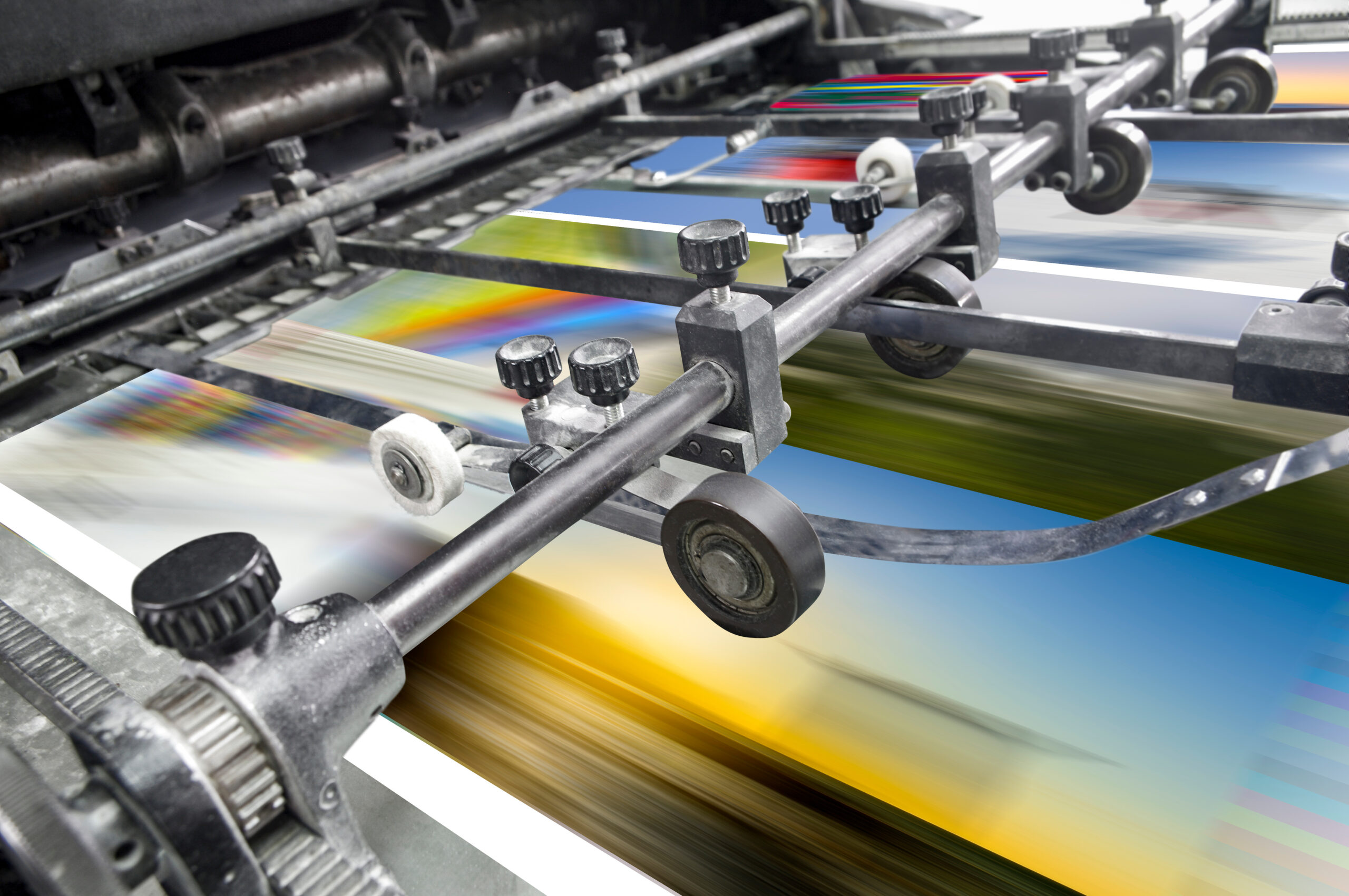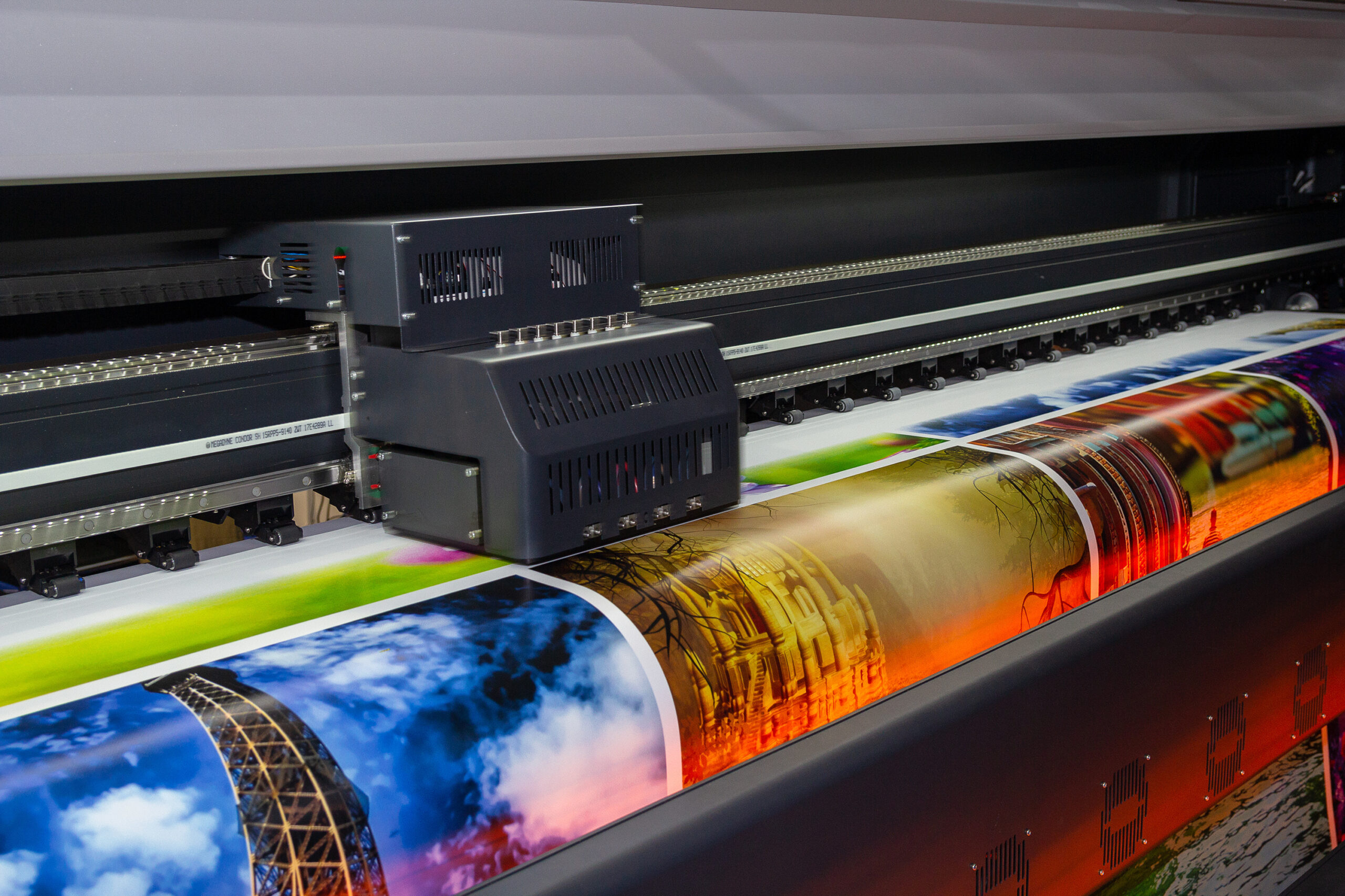Digital printing is a printing method that uses digital data directly, while offset printing is a traditional method that prints via plates. Each method has its own advantages and characteristics, and the choice depends on the purpose of use and the scale of the printing job. Here we explain the characteristics of each.
Offset printing

When commissioning printing, it is important to understand the characteristics of each printing method and choose the appropriate one. Here we will discuss offset printing and on-demand printing, both of which are commonly used to produce booklets.
Offset printing is a method in which a printing plate is made and process ink is transferred from a rubber roller, called a blanket, onto paper. The method is mainly used for magazines, flyers, and newspapers. In offset printing, colors are expressed by multiplying the process color inks described below, but special inks can also be used if they cannot be expressed using CMYK alone.
Offset printing uses process color plates of C (cyan), M (magenta), Y (yellow), and K (black) to reproduce colors by printing four colors on a single sheet of paper.
The ability to produce large quantities of clear prints is a feature of this printing method, and it is widely used for commercial printing of large quantities of flyers, booklets, books, etc., as it can reduce unit costs by printing in large quantities.
If you are looking for high-quality printing with a large number of copies, offset printing is recommended, although it takes longer to deliver than digital printing.
Digital printing

Digital printing, on the other hand, is a printing method in which toner is burned(liquid ink) directly onto paper and does not require a plate. Since it does not require the cost and time to make plates, digital printing is mainly used for self-published materials, photo collections, and fanzines that are produced in quantities ranging from a few to 100 copies. Tickets with serial numbers can also be easily printed. Let’s take a look at the characteristics of offset printing and digital printing.
Have you ever wondered about printing methods when you order printing from a specialist? There are many different types of printing.
Digial printing is a method of printing directly from a printer (digial machine) using powdered toner or liquid inks without using a printing plate.
Since it does not require the creation of plates, the time required for plate making can be shortened, making it suitable for short delivery times and printing small numbers of copies. The greatest feature of this method is that it can handle variable (variable) data. Digital printing technology is improving year by year, but it is still slightly inferior to offset printing in terms of quality.
Advantages and disadvantages of offset printing
Advantages
High quality
A wide variety of printable papers (materials), inks, and processing options
Disadvantages
Cost is relatively high when printing small numbers of copies
Requires a longer delivery time than digital printing
Advantages and disadvantages of digital printing
Advantages
Variable (variable) printing is possible.
Small-lot printing (from 1 copy)
Quicker turnaround time than offset printing
Disadvantages
Limited paper types and thicknesses
Paper is easily affected by humidity and heat, and may be wavy in hot and humid environments (for toner basis)
Workflow of offset printing and digital printing
Offset printing workflow
After data is submitted, the image of the submitted data is burned onto an aluminum plate (printing plate) for printing through the plate-making (imposition) process. The printing plate is created in ink colors (CMYK + spot color). The printing plate is mounted on the printing press, and after the press is set up, printing is performed. After printing, several hours are required for the ink to dry.

Digital Printing workflow
The driver of the digial printing machine processes the data to be printed by color separation and prints (thermal transfer) the powdered toner on paper. Printing plates are not required, and the time required to set up the machine is much shorter than with offset printing. Ink drying time is also unnecessary.

Drop us any requirement
If you are considering printing in Japan or Malaysia, please do not hesitate to contact us!
